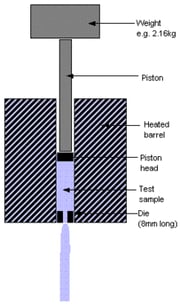 So you’ve narrowed down what material you need thanks to our “Learn More About your Plastic Sheet” series - now it’s time to download a data sheet and take a look at the performance attributes of the materials we carry. But if you’re new to the industry, or don’t work in a technical role, the information stated on material data sheets can leave you more confused than when you started.
So you’ve narrowed down what material you need thanks to our “Learn More About your Plastic Sheet” series - now it’s time to download a data sheet and take a look at the performance attributes of the materials we carry. But if you’re new to the industry, or don’t work in a technical role, the information stated on material data sheets can leave you more confused than when you started.
If you’ve ever felt this way after reviewing a material data sheet, then this next Impact Plastics Blog series focused on “Understanding your Data Sheet” is for you. In this next blog series, we will explore ASTM tests commonly found on material data sheets for thermoplastic resins. Our last post discussed tensile strength and tensile elongation – now we move onto another commonly encountered specification – Melt Flow Index or Melt Flow Rate. Continue reading to learn more!
The American Society for Testing and Materials (ASTM) is an organization that defines and sets standards to ensure good quality and workmanship. Over 12,000 ASTM standards operate globally, including tests specific to plastics, to help consumers have confidence that the products they purchase will perform as expected.
 One of the ASTM test methods for plastic commonly seen on data sheets is a test for Melt Flow Index or Melt Flow Rate. This test is often seen with the designation ASTM D1238. Melt Flow Rate (MFR) measures the rate of extrusion of thermoplastics through an orifice at a prescribed temperature and load. This test offers a means of measuring the flow of a melted material, which can be used to differentiate between grades of the same polymer, as with polyethylene, or determine the extent of degradation of the plastic as a result of multiple heat histories. MFR is an indirect measure of molecular weight, with a high MFR corresponding to a low molecular weight and vice a versa.
One of the ASTM test methods for plastic commonly seen on data sheets is a test for Melt Flow Index or Melt Flow Rate. This test is often seen with the designation ASTM D1238. Melt Flow Rate (MFR) measures the rate of extrusion of thermoplastics through an orifice at a prescribed temperature and load. This test offers a means of measuring the flow of a melted material, which can be used to differentiate between grades of the same polymer, as with polyethylene, or determine the extent of degradation of the plastic as a result of multiple heat histories. MFR is an indirect measure of molecular weight, with a high MFR corresponding to a low molecular weight and vice a versa.
To conduct this test, approximately 7 grams of the specified polymer is loaded into the barrel of the melt flow indexer, which has been heated to a specified temperature depending on the material being tested.A weight specified for the material is attached to a plunger and pressed down on the material forcing it through a die. A timed extrudate is then collected and then weighed. From this data the melt flow rate value is then calculated and expressed in g/10 min.
For more information on our products, contact our team to schedule your free material consultation!





